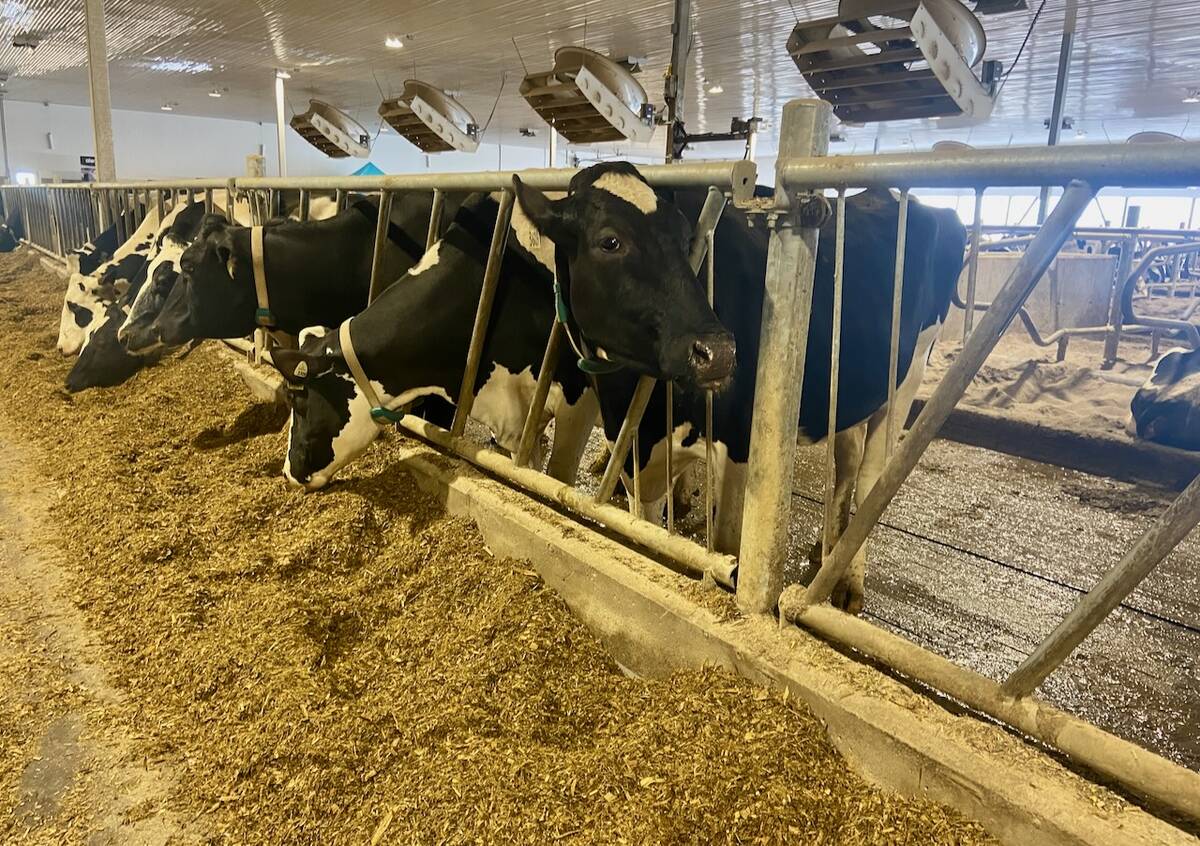Pneumonia is often considered to be a disease of weaned calves in the feedlot, and that is the most common presentation of the disease in cattle.
However, nursing calves on pasture can also be severely affected by pneumonia outbreaks.
The disease is sometimes known as “summer pneumonia” or “enzootic pneumonia.”
It can affect calves as young as one week old or cause problems later while on pasture, usually at less than three months of age.
The disease can be frustrating to deal with because it is difficult to treat young calves on pasture. Even the act of catching and restraining them for treatment can be difficult.
Read Also

U.S. farm group supports supply management
U.S. grassroots farm advocacy group pushing new agriculture legislation that would move towards supply management like Canada has for dairy industry
Many of the bacteria and viruses that cause pneumonia in young calves are present in the respiratory tract of healthy calves and cows. They don’t cause problems unless the immune system is compromised or some other stressor appears that allows bacteria to damage the lungs.
Unfortunately, we don’t properly understand all of the factors that can set off a respiratory disease outbreak in young calves and are sometimes baffled when we have problems on well managed operations.
As well, the disease is often complicated by a secondary bacterial infection by the time we see a sick calf. The bacteria we isolate from the lungs may not be related to the initiating infection, which is often a respiratory virus.
We can usually treat the bacterial infections effectively if the disease is detected in its early stages, but it is up to the calf’s immune system to recover from the viral infections.
Calf pneumonia is a more common disease in dairy and veal calves, and most of our knowledge about the disease comes from research in the dairy industry.
It is common for 25 to 29 percent of young calves in dairy herds to have some level of respiratory disease. Even though mortality rates are low, the affected calves have slower growth rates and tend to take longer to reach puberty.
The disease is often associated with crowded and inadequately ventilated housing for young dairy calves.
But then why do beef calves get this disease?
Crowding and ventilation are rarely an issue for beef calves on pasture. As well, pneumonia can be prevented in weaned calves by minimizing weaning stress and doing a good job of early vaccinations.
The risk factors are not as clear cut when it comes to summer pneumonia in young nursing calves.
Factors that cause the immune system to stop functioning at optimal levels can obviously play a role in these outbreaks.
Bovine viral diarrhea virus dramatically affects the immune system, and although it does not usually cause pneumonia, it can suppress the immune system of young calves to allow other viruses or bacteria to gain a foothold.
I have worked with herds where exposure to BVD virus was responsible for creating a pneumonia outbreak in young calves.
As well, calves can be much more susceptible to infectious diseases, including pneumonia, if cows have inadequate colostrum or calves have an inadequate intake of colostrum immediately after birth.
Other risk factors include dusty conditions, which may compromise the respiratory tract.
Outbreaks also tend to be more common when drought occurs and pasture conditions are not ideal.
Weather conditions can play a role, and we often see outbreaks after a late spring snowfall.
Mixing cattle together from various sources is an important risk factor for respiratory disease in weaned calves and may be another risk factor for the disease in young calves.
As a result, community pastures could potentially have a slightly higher risk of respiratory disease.
Crowding calves together for short periods may also allow bacteria and viruses to transmit more easily.
As well, management procedures such as estrous synchronization and artificial insemination, which group calves together and separate them from their mothers for short periods, might potentially exacerbate this disease.
Many producers vaccinate their calves when they turn them out on pasture, and veterinarians will often recommend that respiratory vaccines be included at this time.
There is evidence that young calves will develop an immune response, but the evidence isn’t as strong about how well these vaccines protect calves while on pasture.
Those types of clinical trials are difficult to perform, and although we know the calves develop some immunity, we aren’t sure about the level of protection.
We can still occasionally see outbreaks in well vaccinated herds, so obviously vaccination status is only one piece of the puzzle.
Summer pneumonia is often caused by a combination of risk factors, and sorting out why it is occurring is often a difficult challenge.
I have worked with well managed herds that continue to have cases of pneumonia in young calves.
Viruses such as coronavirus may be involved with some of these outbreaks, and in those cases effective vaccines may not be available.
Work with a herd veterinarian to establish a good vaccination program and attempt to identify potential risk factors that can be controlled before calves are turned out on pasture.














